Hello,
Here is today's bake. 17% of the flour was whole unsifted rye milled at home, the rest white bread flour (KA). All of the rye was mashed. I am obviously a newbie to mashing and still experimenting, some books on the way. Also I am still refining the overall formula and procedure, but anyhow, here's how it came out. I am enjoying it.
All weights in grams.
Overall:
Total Dough Weight: 950
Total Dough Hydration: 72%
Total Dough Flour Weight: 552
Total Dough Water Weight: 398
Percentages:
Leaven/Levain Percentage: 20%
Leaven/Levain Hydration: 125%
Starter Percentage: 10% of leaven
Starter Hydration: 125%
Soaker Percentage: 58%
Soaker Hydration: 80%
Soaker Salt Percentage: 1%
Mash Percentage: 30% of soaker
Mash Hydration: 200%Final Dough Salt Percentage: 2.0%Leaven/Levain:
Flour Weight: 106
Water Weight: 133
Starter Weight: 11
Mash:
Whole Rye Flour (unsifted) Weight: 96
Water Weight: 192
Diatastic Malt Powder Weight: 1
Soaker:
All Of Mash
White Flour Weight: 224
Water Weight: 64
Salt Weight: 3
Final Dough
All Of Leaven
All of Soaker/Mash
White Flour Weight: 121
Water Weight: 3
Salt Weight: 8
Procedure/Notes:
1. Make the mash at your desired temperature, probably between
60C and 70C for 3 hrs. I have not yet decided upon my ideal
temperature, this one was 73.5C, which is considered too high.
2. Allow mash to cool, then mix with the soaker flour + water.
I added 30 extra grams of water to compensate for evaporation loss
from the mash process. However, I did not specifically measure
the actual evaporation loss from mashing, so the true final
hydration may be off by a percent or two from the original plan.
3. Separately, mix the leaven / levain.
4. Wait until leaven is ripe, for me it was about 15 hrs.
5. Mix all components to incorporated, autolyse for 30 mins.
6. Mix further until gluten is fairly well developed but not completely developed.
7. Bulk ferment 4 hrs, with 2-3 stretch + folds. I use moist fingers to handle
the somewhat sticky dough.
8. Shape. Rice flour works well for bench-flour.
9. Final ferment for 45min-1hr, depending on how the dough feels and/or
looks. I cut a small piece of the dough and put it into a clear plastic
container, and watch for a thorough amount of bubble-forming activity. The
amount of final rise of the dough doesn't seem to be as important as
thoroughness of bubble activity (tons of little bubbles all throughout).
10. Score, bake at 450F / 232C with steam for initial 15 mins. Vent and complete
bake for another 20-25 mins. (After 10 mins I turn the bread once to get a more
even bake, as my oven is hotter near the back than the front).
11. Be sure to check internal temp of bread, make sure it is at least 205F / 96C.
Preferably 210-212F.
A little lopsided... ooops.
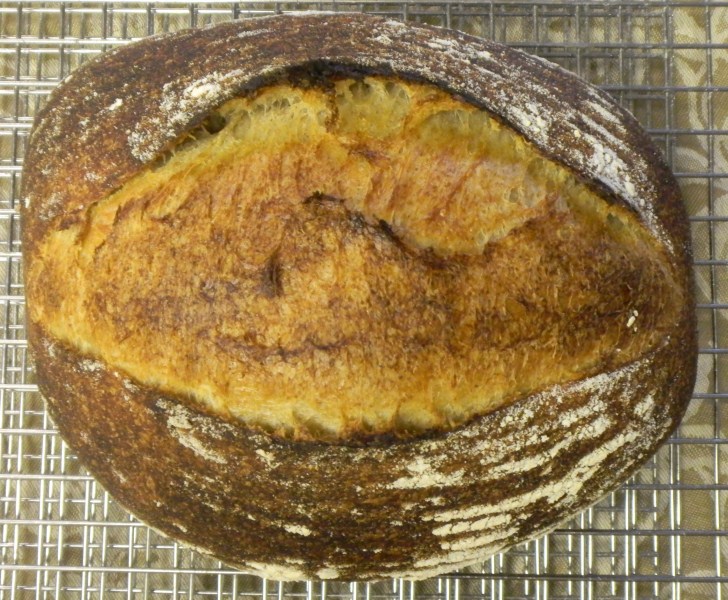
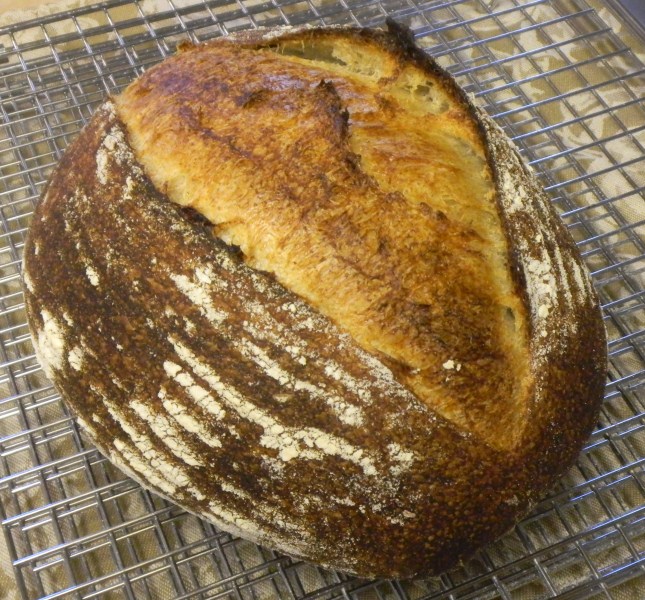
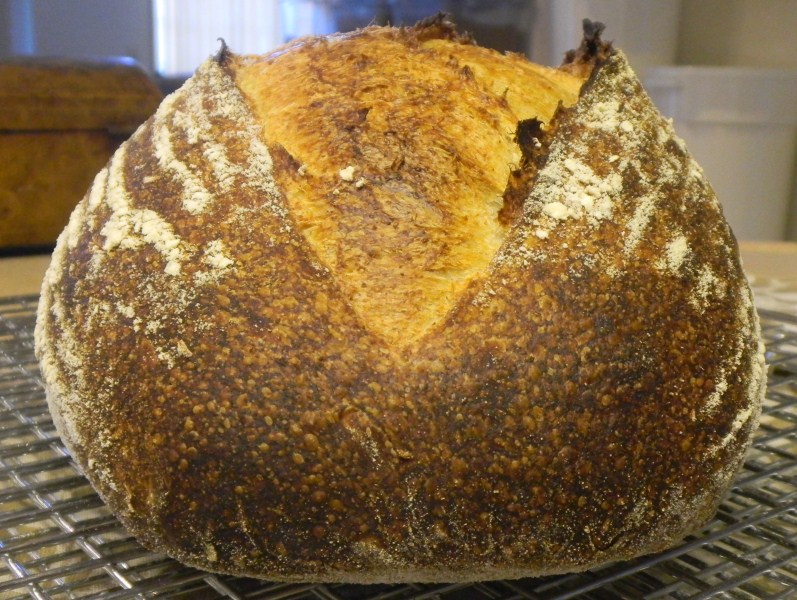
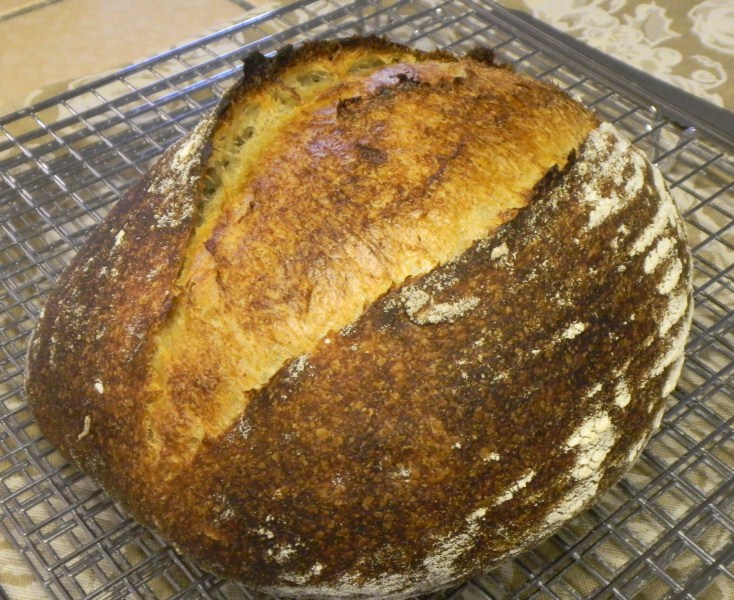
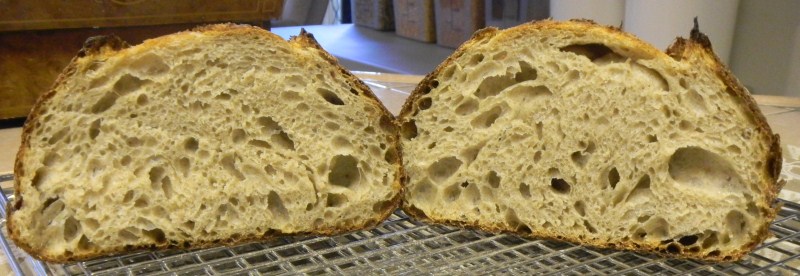
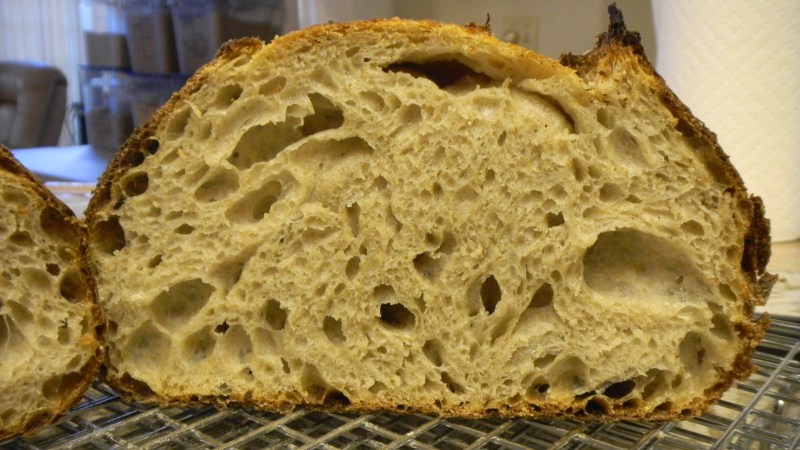
Cheers!
Very nice gvz. Was it sweet tasting?
Thanks ehanner. This rye mash was sweet, but not as sweet as some other attempts. I am starting to believe that a mash temp that denatures beta amylase does impact flavor. As far as the bread, it has a sweetness but not like if you added table sugar. The main sweetness comes from glucose and maltose, they are lower down on the scale of sweetness than, say fructose. To me the mash breads have an added depth of flavor overall. I also like the softer, moister, chewier texture it brings. The above bread's crumb darkened a bit after 4-5 hrs of cooling. I took the pictures above when it was still a bit warm. :)
Here was tonight's dinner. Grilled ham + cheese.
Gvz, your bread looks really great.
Since you already used it, an alternative to the mash to get more sweetness is a cold and long soaker made with salt and rye flour, that i used several times. The added sweetness was clearly perceivable, the bread came out quite darker, but the drawback was the lower hydratation I had to use in the final dough: with time the amylase in the soaker melts the sugars of the rye flour and the soaker itself loses consistence. If you like experimenti this is a technique that you should try. A soker on white wheat flour doesn't have nearly the same effect.